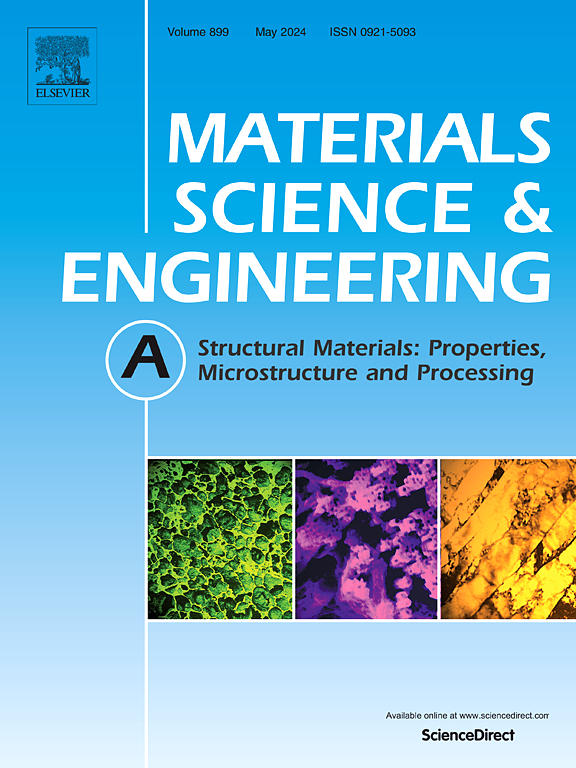氢辅助开裂对316L不锈钢选择性激光熔化力学性能的影响
IF 7
2区 材料科学
Q1 MATERIALS SCIENCE, MULTIDISCIPLINARY
引用次数: 0
摘要
采用小冲床(SP)试验研究了氢辅助开裂对选择性激光熔化(SLM) 316L不锈钢(SS316L)力学性能的影响。研究了SS316L的扫描速度、激光功率、能量密度和强度特性等工艺参数之间的关系,重点研究了氢气预充的影响。实验结果表明,增大扫描速度和激光功率可使最大峰值载荷(Pm)和断裂位移(δf)达到最佳范围。这种改进归因于增强的微观组织性能,包括更好的融合和晶粒尺寸的减小,从而导致更均匀的晶粒结构,并有助于提高机械强度。然而,在此最佳范围之外,由于能量密度降低,机械性能下降,导致微观结构完整性变差。这些发现表明,在特定的扫描速度和能量密度范围内,可以获得SS316L优异的力学性能。另一方面,预充氢会导致材料的力学性能显著下降,Pm和δf都比未充氢的材料有所降低。这种退化表明存在氢增强的局部塑性(HELP)。几何上必要的位错(GNDs)和孪晶密度测量是从断裂SP试样的拉伸区域获得的。这些测量提供了对氢气预充加剧材料降解的潜在氢诱导损伤机制的见解。本文章由计算机程序翻译,如有差异,请以英文原文为准。
Impact of hydrogen-assisted cracking on the mechanical properties of 316L stainless steel produced by selective laser melting using an in-situ small punch test
This study investigates the impact of hydrogen-assisted cracking on the mechanical properties of 316L stainless steel (SS316L) produced by selective laser melting (SLM) using a small punch (SP) test. The relationships between the process parameters, specifically the scan speed, laser power, energy density, and strength characteristics of SS316L are explored, with a particular focus on the effect of hydrogen precharging. Experimental results demonstrate that increasing the scan speed and laser power improves the maximal peak load (Pm) and fracture displacement (δf) up to an optimal range. This improvement is attributed to enhanced microstructural properties, including better fusion and a reduction in grain size, which results in more uniform grain structures and contributes to higher mechanical strength. However, beyond this optimal range, the mechanical performance diminishes owing to the reduced energy density, leading to poorer microstructural integrity. These findings suggest that the optimal SLM parameters for achieving superior mechanical properties in SS316L lie within a specific range of scan speeds and energy densities. Hydrogen precharging, on the other hand, leads to a significant degradation in mechanical properties, with reductions in both Pm and δf compared to uncharged specimens. This degradation suggests the occurrence of hydrogen-enhanced localized plasticity (HELP). Geometrically necessary dislocations (GNDs) and twin density measurements are obtained from the stretched regions of the interrupted SP specimens. These measurements provide insights into the underlying hydrogen-induced damage mechanisms by which hydrogen precharging exacerbates material degradation.
求助全文
通过发布文献求助,成功后即可免费获取论文全文。
去求助
来源期刊

Materials Science and Engineering: A
工程技术-材料科学:综合
CiteScore
11.50
自引率
15.60%
发文量
1811
审稿时长
31 days
期刊介绍:
Materials Science and Engineering A provides an international medium for the publication of theoretical and experimental studies related to the load-bearing capacity of materials as influenced by their basic properties, processing history, microstructure and operating environment. Appropriate submissions to Materials Science and Engineering A should include scientific and/or engineering factors which affect the microstructure - strength relationships of materials and report the changes to mechanical behavior.
 求助内容:
求助内容: 应助结果提醒方式:
应助结果提醒方式:


